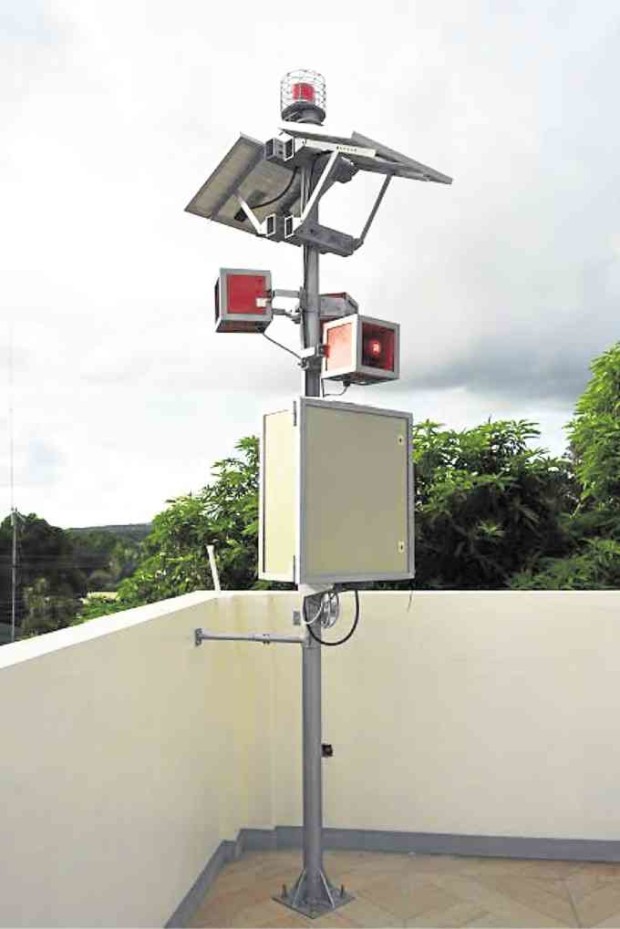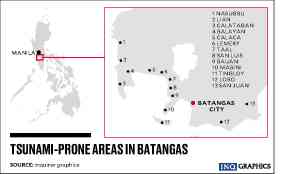In Batangas, school equips coastal communities with tsunami warning device
In Batangas province, a tsunami warning comes with an alarm and a text broadcast alerting residents hours before its impact on coastal communities.
Developed by Batangas State University (BatStateU), the Sigaw (Solar-powered Isotropic Generator of Acoustic Wave) serves as a tsunami early warning system for seaside communities. “Sigaw” is also a Filipino word for scream or shout.
According to Dr. Tirso Ronquillo, BatStateU president and project leader, the 10-foot- (3.5-meter) tall device comes with a solar panel and operates with a GSM communication (global system for mobile communications) and control module attached to a 126-decibel siren.
It has sensors that, once triggered by information coming from the Philippine Institute of Volcanology and Seismology system, will set off an alarm audible up to a distance of 500 meters. The device will also transmit text messages to mobile phones registered in the Sigaw system.
“It will alert local folks in two ways: [one is] through an audible sound and [second is through] a text broadcast,” Ronquillo told the Inquirer in a recent interview.
3 levels of warning
The prolonged alarm comes in three levels of warning, each with varying pitch and cadence or pattern.
The higher the pitch and the more frequent the alarm means a higher alert level. Under the current design, Level 3 means the “most critical” situation requiring forced and immediate evacuation.
He said the system was designed to give residents enough time to evacuate and seek safer grounds.
The project started last year with the initial installation of Sigaw in Calatagan, Nasugbu and Lian towns, he said.
With a P4-million funding from the United Nations World Food Programme, the university is committed to install 17 units in 13 towns identified as tsunami-prone by the provincial disaster risk reduction and management council, according to Ronquillo.
The 10 other municipalities are Balayan, Bauan, Calaca, Lemery, Lobo, Mabini, San Juan, San Luis, Taal and Tingloy.
The device has not been used in an actual tsunami scenario.
According to Ronquillo, the university is planning to install two units of Sigaw in Mabini once the Philippine Coast Guard gives it clearance.
In April, Mabini and the neighboring island town of Tingloy suffered heavy damage on infrastructure due to a series of earthquakes that struck these areas.
There was panic and confusion as word got out that a tsunami would hit, forcing several residents to seek higher grounds or flee from coastal villages.
Many residents refused to return to their homes due to fear of aftershocks and tsunami.
A science-based warning device aims to promote correct practices, especially in times of disaster, Ronquillo said.
“Through science and technology, we can save lives and provide solutions to problems in the communities,” he added.
He said each unit cost around P300,000 but the university was planning to make Sigaw commercially available and affordable so other coastal provinces could use it.
















